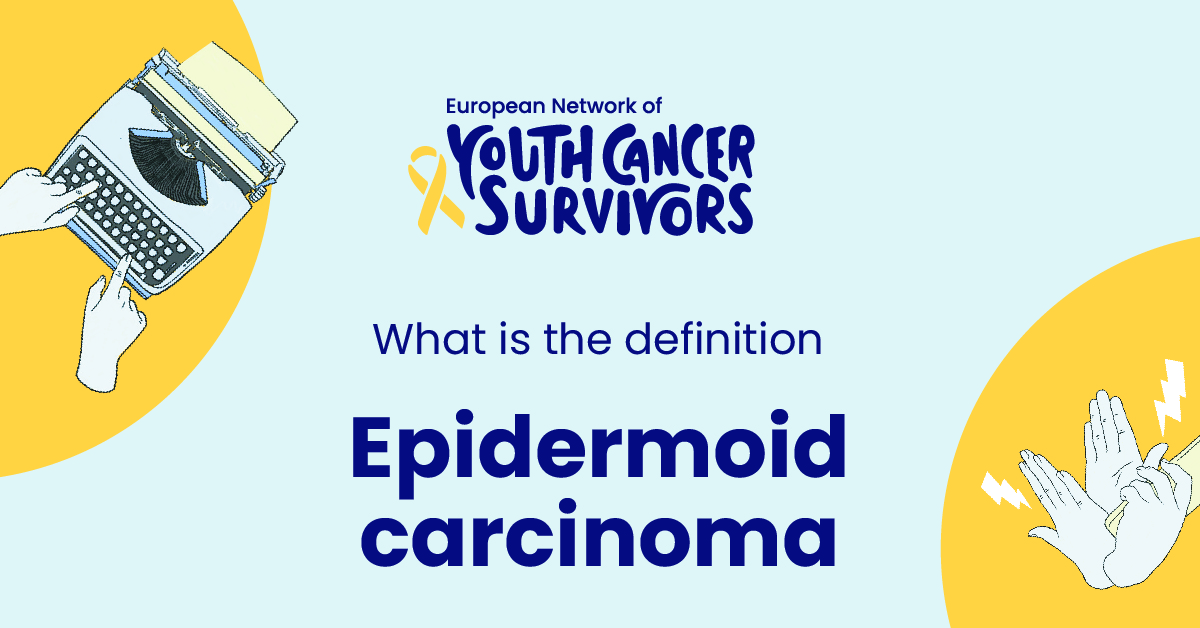 Epidermoid Carcinoma, also commonly known as squamous cell carcinoma, is the second most common form of skin cancer. This type of cancer is characterized by the abnormal growth of cells that form the skin’s outermost layer – the epidermis. It arises from squamous cells, which are thin and flat, and under normal circumstances, they constantly shed and replace dead skin cells.
Epidermoid Carcinoma, also commonly known as squamous cell carcinoma, is the second most common form of skin cancer. This type of cancer is characterized by the abnormal growth of cells that form the skin’s outermost layer – the epidermis. It arises from squamous cells, which are thin and flat, and under normal circumstances, they constantly shed and replace dead skin cells.
Contrary to popular belief, Epidermoid Carcinoma is not confined only to the skin. It can also develop in any organs and tissues that have squamous cells, such as the lungs, esophagus, cervix, and other parts of the body. This versatile nature of the disease has led to widespread concern globally.
Understanding Epidermoid Carcinoma – The Definition
Epidermoid Carcinoma denotes a type of cancer that forms within squamous cells. These are the thin, flat cells that make up the epidermis or the outermost layer of the skin. However, its reach is not confined to the skin; it can affect organs like the mouth, throat, lungs, and more.
This form of cancer is distinct from other skin cancers due to its ability to spread to the fatty tissues underneath the skin, and sometimes, to various parts of the body. This makes it more dangerous compared to other non-melanoma skin cancers.
The Causes and Risk Factors Associated with Epidermoid Carcinoma
Epidermoid Carcinoma is usually the result of prolonged exposure to the ultraviolet (UV) rays of the sun. People who regularly use indoor tanning beds or lamps are also at risk. However, it’s not just exposure to UV rays. The risk is even greater for those carrying human papillomavirus (HPV) or anyone with weakened immune systems, presenting the disease’s multi-causal nature.
Risk factors include age, as the chances of developing this cancer multiplies with advancing age. Individuals who have fair skin, light hair, or blue or green eyes are more prone. Previous exposure to specific chemicals, radiation therapy, or enduring certain inflammatory skin conditions also heightens the risk.
Symptoms and Signs of Epidermoid Carcinoma
The symptoms of epidermal carcinoma can vary from person to person. However, some common signs include a firm, red nodule on the skin, a flat sore with a scaly crust, new sore or raised area on an old scar, a rough, scaly patch on the lip, and a red sore or rough patch inside the mouth.
Understanding the progression of the disease is pivotal. An untreated squamous cell carcinoma can grow deep into the skin, causing damage and disfigurement. And at an advanced stage, it’s even capable of spreading to other parts of the body.
The Diagnostic Process for Epidermoid Carcinoma
Diagnosing Epidermoid Carcinoma commences with a detailed examination of the patient’s medical history, followed by a thorough physical examination. Dermatologists may utilize a dermatoscope, a special magnifying lens for viewing skin lesions.
Skin biopsies are a common method of confirming the diagnosis. This involves removing a small sample of the skin for scrutiny by a pathologist under a microscope. At times, imaging tests, like CT scans, maybe recommended to verify if cancer has spread to other regions.
Treatment Options for Epidermoid Carcinoma
Treatment for Epidermoid Carcinoma involves a range of options depending on the stage, location, and severity of the disease. This can include procedures like excision, cryotherapy, radiation therapy, topical medication, or a combination of these treatments.
The success rate of each modality can vary. Factors like the size, depth, and location of the tumor, and whether it has metastasized, have a bearing on the overall effectiveness of the treatment.
Importance of Early Detection and Prevention of Epidermoid Carcinoma
Early detection of Epidermoid Carcinoma can significantly improve prognosis and reduces the complexity of the treatment. It also lessens the chances of metastasis – where the cancer spreads to other parts of the body.
Preventing Epidermoid Carcinoma majorly involves limiting exposure to harmful UV rays. Regular self-examination can also aid in early detection and prompt consultation with a medical professional if any worrying signs are observed.
Living with Epidermoid Carcinoma
Living with Epidermoid Carcinoma can pose numerous physical and emotional challenges. Coping mechanisms will invariably differ from person to person, but most will need to make lifestyle adjustments. They will also need to comply with regular medical checkups, adhere to skin protection measures, and lead a healthy lifestyle to mitigate any chance of recurrence.
A steadfast support system, both from family and professional counselors, can make the journey a lot more bearable.
Conclusion
In conclusion, Epidermoid Carcinoma is a severe skin condition that warrants attention and treatment. The key to combating this disease effectively is by understanding it – recognizing its causes, risks, symptoms, and treatment options.
It’s also crucial to seek medical consultation at the earliest sign of abnormality. On the whole, proactive prevention, early detection, appropriate treatment, and living as healthily as possible are the best strategies in navigating this disease.
Frequently Asked Questions
- What is Epidermoid carcinoma and who is at risk?
Epidermoid carcinoma is a type of skin cancer that originates in the squamous cells, which form the outermost layer of the skin. It can also affect organs lined with squamous cells like the lungs, throat, and more. The risk is particularly high for individuals who are regularly exposed to UV rays, have light hair, blue or green eyes, or carry the human papillomavirus (HPV).
- How do I know if I have Epidermoid carcinoma?
Typical symptoms can include firm red nodules, a flat sore with a scaly crust, a rough patch on your lip, or a red sore inside your mouth. If you notice any similar signs, contact a healthcare professional promptly.
- How is Epidermoid carcinoma diagnosed and treated?
Epidermoid carcinoma is usually diagnosed with a skin biopsy where a small skin sample is examined under a microscope. Treatment options can include surgery, cryotherapy, radiation therapy, or topical medication.
- What’s the difference between Epidermoid carcinoma and other forms of skin cancer?
Unlike other skin cancers that largely remain on the skin’s surface, Epidermoid carcinoma can spread to the fatty tissues underneath, and at an advanced stage, to other parts of the body.
- Can Epidermoid carcinoma be prevented?
While there are no guaranteed ways, measures can be taken to lower your risk. These can include reducing exposure to UV rays, avoiding tanning beds and lamps, practicing regular self-examination, and seeking prompt medical help at the onset of any alarming signs.

















Comments
Thank you. Comment sent for approval.
Something is wrong, try again later